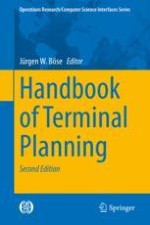2020 | OriginalPaper | Buchkapitel
3. Modeling Techniques in Planning of Terminals: The Quantitative Approach
Ensuring Planning Becomes Reality – Even in Challenging Times
verfasst von : Yvo A. Saanen
Erschienen in: Handbook of Terminal Planning
Aktivieren Sie unsere intelligente Suche, um passende Fachinhalte oder Patente zu finden.
Wählen Sie Textabschnitte aus um mit Künstlicher Intelligenz passenden Patente zu finden. powered by
Markieren Sie Textabschnitte, um KI-gestützt weitere passende Inhalte zu finden. powered by
